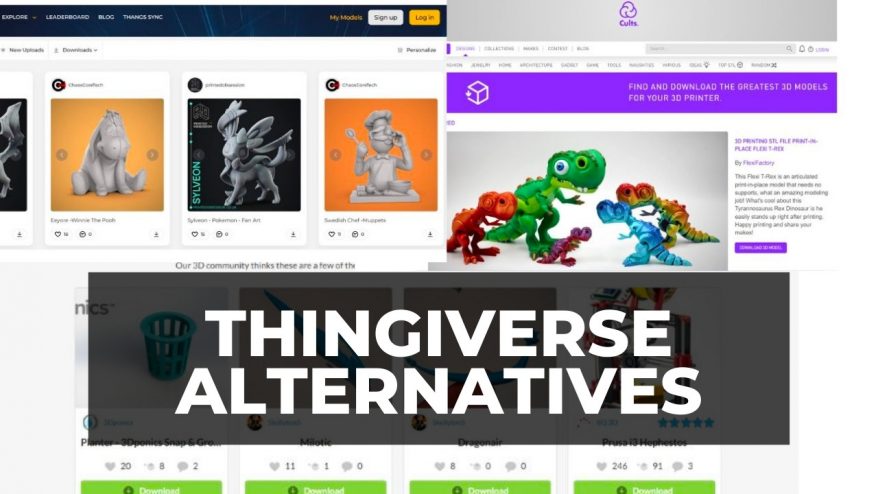Key Takeaways
- 3D printing business: How to make money with a 3D printer by creating and selling 3D printed items online.
- Product ideas: Different types of 3D printed items that sell well, such as cosplay accessories, custom earphones, retro game cases, and more.
- Marketplaces: Different online platforms where you can sell 3D printed items, such as Etsy, Fiverr, Amazon, and Thingiverse.
- Tips and tricks: Some key things to know before selling 3D printed items, such as legal issues, marketing strategies, presentation skills, and customer service.
3D printers are one of the technological marvels of our time, and people get them for many different reasons. Some are hobbyists wanting to try something new, others are artists and professionals of various kinds looking to expand their craft.
What we’re talking about here is in effect creating your own e-commerce business by looking for those niche things to 3D print and sell.
What we’re talking about here is you finding a product niche that ideally you’re enthusiastic about that you can provide products for sale that a specific group of customers want.
There are many benefits, and little downsides to starting a business this way. If you already have a 3D printer – you’re already half way there to making money with a 3D printer.
Don’t have a 3D printer yet? The best 3D printers in every price range
This article is going to cover the different ways you can set up your own business selling 3D prints, with different product ideas in different niches. Any one of these products can be used right now to create a profitable 3D printing-based business, and hopefully they’ll spark your imagination for thinking of other product ideas and niches.
- Key Takeaways
- What Should You Know?
- Make Money With Your 3D Printer By Starting Your Own Site
- What 3D Items Sell Online?
- Nerf Gun Accessories
- Cosplay Clothing and Accessories — hugely popular 3D printed items that sell to superfans
- Customized Shoes (Flip Flops)
- Statuettes and Figurines — great 3D printed items that sell
- Architects’ Modeling
- Jewelry & Ornaments
- Movie-grade Props
- Vases and Plant Pots
- Retro Raspberry PI Cases
- Bespoke PC Cases
- Cell Phone Covers
- Robotics Kits
- Own Range of Drones, RC Planes & Accessories
- Toys
- Current Trend
- Customized Ear Buds
- Where Can You Sell Your 3D Prints?
- Conclusion: is it worth selling your 3D prints to make money?
But first, here’s some key things you should know.
What Should You Know?
It’s never been easier to start an e-commerce business
With a plethora of Marketplace channels to sell your 3d prints on and low-cost ways to create your own e-commerce website. What’s more, often the most problematic issue in e-commerce is product sourcing – but you already have that sorted, sitting on your workbench.
A 3D printer is the perfect micro-factory for many reasons. You can update your designs and print new revisions of your product near-instantly, keeping your inventory up to date in real-time. In fact, you don’t even need to hold a physical inventory.
Let’s say you get your first order at 5:30pm on a Weds night? Set the printer on an overnight batch, pick, prepare and ship by Thursday morning. The customer gets their order (hopefully) on Friday, and you’ll be getting great feedback by the weekend.
OK, so that’s a little over-simplified. Business is never that simple, and let’s face it – 3D printing isn’t always either. But this does illustrate the potential once you’ve smoothed out your processes.
What we’re not talking about here though is selling 3D printed items that are custom for people. The margins are too low, because so many people do it. You can’t really brand a commodity like that. We’re also not going to choose items that sell simply because of the novelty that they’re 3D printed – like useless cheap trinkets.
The “Ohh wow, that’s 3D printed?!” reaction at your friend’s dinner parties wears thin pretty quickly…
No, we’re talking about creating quality products, that frankly the customer couldn’t care if they were 3D printed or not. They just care that they fill a need, or want that they have and the quality of the product and your service is something they can rave about. See the difference?
All the examples I’m going to list through below are taken from existing businesses that are actually doing this, right now. Many of them are currently our customers. People are doing this stuff right now, on standard FDM printers.
There are many varieties of complexity, from simply ‘print & send’ easy to make prints to high-end prints that need a bit of finishing. It might help to choose something in your range of complexity. Let’s dive into what could potentially be your next e-commerce business!
Copyright
Before making money with your 3D printer, there are a few key things to note. The first of which is the legal ramifications of selling 3D printed items that resemble the likenesses of copyrighted IPs.
While 3D printing figurines of famous characters is fine for personal use, selling them for a profit can have legal consequences. Be sure to know the laws surrounding fair use of copyrighted material before bringing your work to the marketplace.
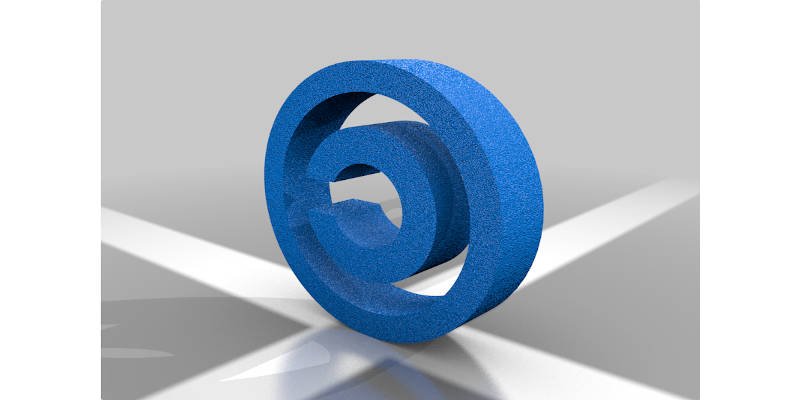
The easiest way to avoid these consequences is to only 3D print and sell original or open-source designs. However, some referential designs such as cosplay accessories and ornamental logos are safe to 3D print for profit.
To design your own 3D printable models, check out:
Our ranking of the best free 3D modeling software
Or, check out our list of the best sites where you can download free 3D printer files
Marketing
Most online sellers these days turn to social media to advertise their products. Many online retailers will recommend you avoid inundating or spamming particular pages or timelines, so some finesse will be required to make sure you get your product out there without bothering potential buyers.
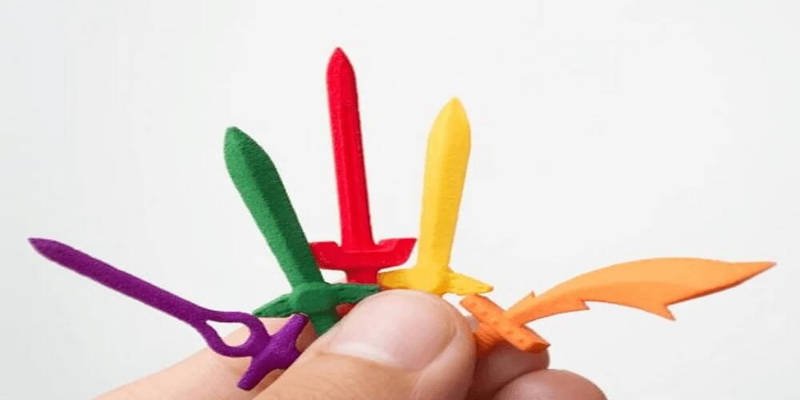
As is the case with many artforms, selling 3D printed items requires good presentation. Professional, high quality photos show off your creations and make them appear more desirable to consumers, as do in-depth descriptions and any necessary instructions for assembly to let customers know they’re in good hands.
Make Money With Your 3D Printer By Starting Your Own Site
Many artists have found a new way to reach their market by cutting out the middle man and starting their own websites and blogs to show off and sell their creations and make money with their 3D printers.
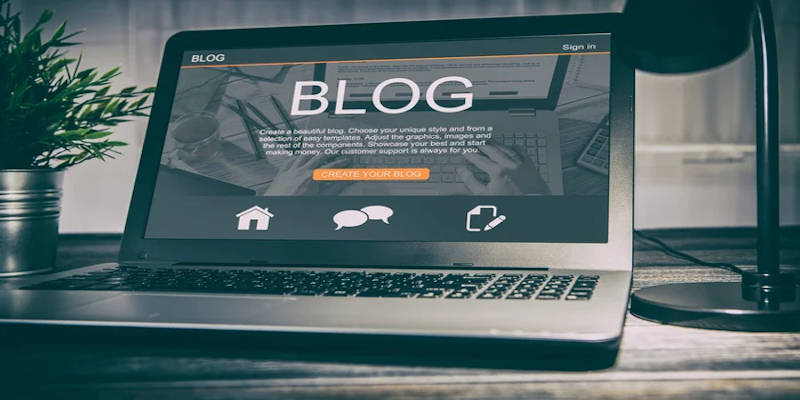
Selling 3D printed items on your own site does remove commission costs, but at the price of having to do just about everything yourself. All marketing and publicity needs to be done by you, and self-made businesses like that take some time as most people are hesitant to give money to unverified businesses.
But with enough know-how, careful self-promotion, and good word-of-mouth, you’ll be able to sell your 3D printed stuff in no time.
What 3D Items Sell Online?
If you can print it, then you can almost definitely sell it. While choosing which 3D printed items to sell comes down to your own design specialties, preferences, and what your hardware is capable of, making money with a 3D printer can be achieved in many ways.
Below are just a few of our favorite ideas for what you can 3D print to sell.
Nerf Gun Accessories

This looks a bit obvious (and yes, I briefly covered Nerf mods in another article) but I wanted to kick things off with something that perfectly encapsulates what I’m trying to get across here. There’s a growing following around Nerf guns, they’ve grown from a child’s toy in just a few years to a necessary component of office warfare.
Just doing a quick search on eBay for “3d printed nerf” lists a host of cool aftermarket mods. From the picture above, you can see that most of them are really very simple prints. That silencer that sells for $34 US? It likely only uses about 50g of filament (at most). That means you could print 20 from a 1KG spool costing around £30. That means those silencers would cost you about £1.50-£2.00 to print each one.
That’s a pretty incredible profit margin! http://3dprintedsolid.com/ have even gone as far to release their own custom fully modded Nerf guns costing up to $300!
Pros: This business would be very easy to set up. I imagine a lot of the designs for mods are already available free on Thingiverse and the prints are very simple. Prints are fast with no to little post print processing.
Cons: Easy to replicate and potentially lots of competitors could set up quickly (but then again, which business doesn’t?). But you could stay ahead by creating your own unique designs as the demand grew.
Read more: the coolest 3D printed Nerf files you can download and print today
Cosplay Clothing and Accessories — hugely popular 3D printed items that sell to superfans
Cosplaying has seen a huge surge in popularity in recent years, with conventions popping up for just about every fandom from comic books and videogames to TV and film.
Cosplayers take pride in their referential outfits, and many choose to make their costumes themselves to add a layer of uniqueness to the homage of their chosen hero (or villain).
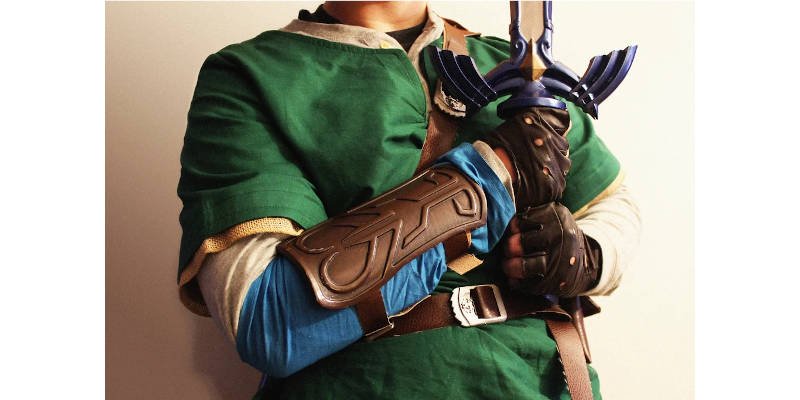
However, many cosplayers don’t have the means to create some of the more intricate or complicated parts of their outfits, and official merchandise of the franchises they seek to emulate can be extremely expensive.
Selling 3D printed cosplay items means providing cosplayers with the clothes and accessories they need to really feel like their favorite characters. There are plenty of 3D printed stuff to sell that will delight cosplayers of all kinds. Batman’s armor, Cloud Strife’s iconic soldier guard, Link’s gauntlets, and the Nazgul’s helmet are all available as pre-made designs, and that’s just to name a few.
See also: our list of the coolest things to 3D print
Or, our ranking of the best 3D printers for miniatures
If you’re creative enough, you can design and 3D print custom items to sell to consumers with specific requests or unique spins on the cosplay of their dreams.
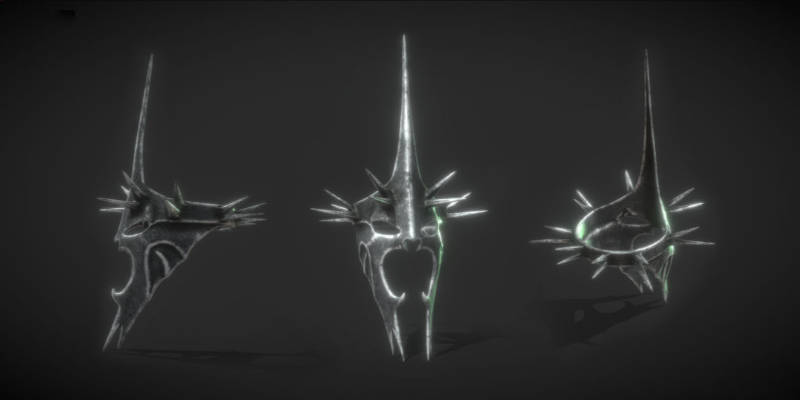
Customized Shoes (Flip Flops)
This sounds a lot more high-tech than it needs to be. This is one of the better ideas here, that hasn’t actually been done yet – but I think it would have fantastic potential. I don’t like sharing my best ideas normally, but I’ve got my hands full at the moment. Besides, execution is everything, anyway (meaning ideas on their own, are worth zilch).
But we’re not talking complex multiple-material shoes like the big companies are working on. But yes, this is part of the mass-customization revolution. The problem I personally find with flip flops is that they’re most comfortable when they’re fully worn in. But flip flops typically aren’t made all that well, certainly not to last (even the more expensive ones).
The paradox is that if you made them out of a material hard-wearing enough to last a long time, they’d never wear in properly. Thus never being optimally comfortable.
So why not create 3d printed flip flops, designed to the exact contours of the wearer’s feet? The high grade of flexible materials to print them (such as TPU filament) with would ensure they last a long time and as they were perfectly created for the wearer, they’d feel like they were worn-in from day one.
You might be thinking “I don’t wear flip flops, so who cares?” – well, a lot of people do wear them. And you might be surprised how much people will pay for them. Remember the Crocs fad? They were hideous, and cheaply made, and they sold for a lot of money.
You can also get apps for mobiles now that can accurately scan simple objects – yes, like the bottoms of your feet. You could sell the flip flops for £50-£100 a pair (and yes, people would pay that for the most comfortable shoes they’ve ever owned, and that are stylish and that could last them 10 years+).
Pros: New idea, could easily get PR from uniqueness. Simple to print, wouldn’t take too long to print each one if using a larger nozzle size. High margin
Cons: Need a reliable way of scanning feet (existing apps around?) and need larger print bed to cover all sizes.
Read more: our feature story on 3D printed shoes
Statuettes and Figurines — great 3D printed items that sell
Speaking of fandoms, there’s nothing quite like decorating your home with physical representations of your favorite characters from the big and silver screens.
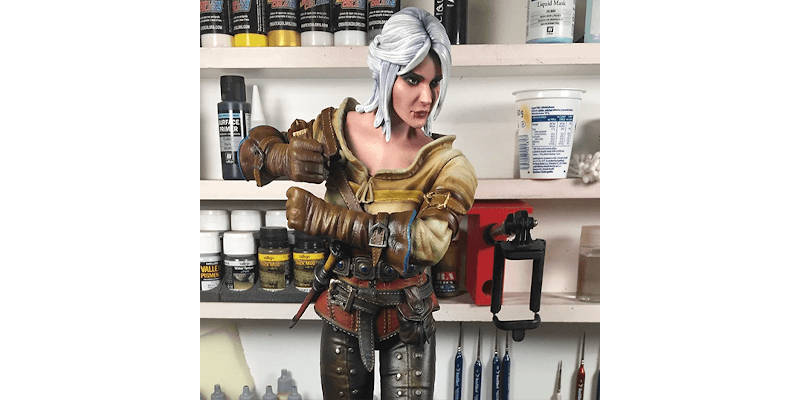
Like cosplay, officially licensed likenesses of these characters can be pricey, and so they make for some popular 3D printed items that sell well on the internet. Figurines don’t have to be representations of fictional characters, and you can 3D print and sell likenesses of celebrities, animals, and even fictional creatures.
People are always looking to make their home or workspaces as personal to them as possible, which makes custom decorative figurines all the more popular with online shoppers.
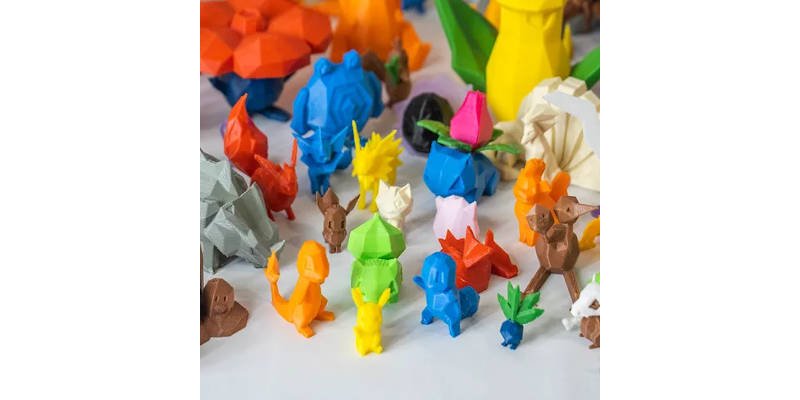
They can be made from files found on many sites, and can take the form of these adorable Pokémon statuettes, to extremely detailed figures like the ones found here.
Because figurines and statuettes vary so widely in detail, they can be made as 3D printed things to sell no matter your 3D printer’s size or capabilities.
Architects’ Modeling

Now this could be set up as a service business, or an e-commerce business depending on which way you look at it. As a service business, you could offer bespoke quotes for architects to show projects in a physical 3D form and print out all the props custom.
As an e-commerce business, you could offer a huge range of buildings of various sizes and props for Architects wanting to show a project as custom, but on a much tighter budget. Naturally, the building in question would need to be custom printed (perfect up-sell opportunity here) but the surrounding buildings and ‘setting’ can be from more generic stock buildings. The most profitable way here might be to run the e-commerce side and service sides of the business in parallel.
There are many off-shoots you could cover here, like dioramas for model railways, Warhammers etc.
Here’s a picture of one of our customers on Twitter, showing off some work they’ve done. It should give you a better idea of the things that are possible.
Pros: Rapidly expanding area, with high levels of repeat trade from business customers.
Cons: Some level of design skill required, or to know someone who can do it cheaply to make it more viable.
Read more: the best 3D printers for architects
Jewelry & Ornaments
Jewelry is one of those universal likes of which almost everyone owns at least a piece or two. Many people who wear jewelry regularly like to have pieces that are unique to them, especially if they’re custom made.
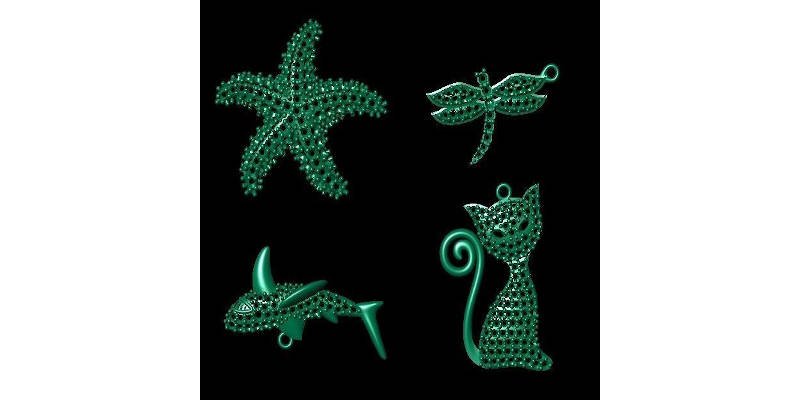
Selling 3D printed jewelry can be a nice way to earn some extra cash by following templates and simple patterns that can be found all over the internet, or by creating your own. If you’re open to exploring your creative side, 3D printed jewelry can be made in different ways including pendants resembling famous logos.
With extremely high resolution and the increasing affordability of photopolymer-based resin 3D printers, bespoke “one-off” jewellery can be crafted from lost wax casting.
Essentially this is where you design a ring, for example, and print it with a UV light curing photopolymer wax. The wax can then be used to create a cast mold, and will burn away when filled with molten metal.
Naturally, this takes a little bit of skill to learn the craft properly, but if you’re extremely creative – retailing your own line of exclusive, high-end jewelry could be a popular business, especially if you make a name for yourself.
The key to this type of business is finding a nice targeted niche, and then specialize in materials and designs that lend themselves to that target audience.
It’s also possible to get extremely accurate FDM printers now, printing with just 0.1mm nozzle diameters. You could get wax filament to print lost wax designs for the casts.

Pros: Again, potentially high ticket and unusual. Lots of potential to be featured by niche publications and blogs. Very big influencers could be persuaded to promote your designs if they get behind them.
Cons: An element of skill and creativity required. Also potentially higher setup costs due to rare metals, and using a resin printer.
See also: our ranking of the best 3D printers for jewelry
Or, our list of the most stunning pieces of 3D printed jewelry
Or even, our list of the best jewelry design software
If you like to draw, jewelry can also be made using 3D pens, which are ideal for those who are better with working directly with their hands.
Movie-grade Props

This could be really high ticket. Extremely realistic props are very sought after by hard-core fans. You’d have to check the legalities of selling items like these though depending on what Game or Film you were basing them on. But private collectors would pay good money for their own Iron Man suit, or a massive gun from a famous game for example.
You’ll need to know how to finish your 3D prints, though.
Pros: High ticket, big sale price items – high virality aspect on social media. People who have their own iron man suit, complete with lights etc. tend to get a bit of attention.
Cons: Large amount of work, but you could make systems to speed up repeat orders (i.e printing small batches of same components, painting them all at once etc.). Potential issues with copyrights.
Vases and Plant Pots

I said vases, but this could be with any high-end designer in-the-home product. Like 3D-printed clocks, coasters, and toothbrush holders. You get the idea.
The key here is that you don’t rely on the fact these items are 3D printed to be the reason people love them. Think high-end, luxury, beautiful-looking items. Are you starting to see a trend here?
I’ve mentioned ‘MeshCloud’ before, but they do this high-end luxury homeware business to a T – they’re a perfect example of how to do this business model right. They have a large range with a variety of prices for unique designs. Etsy, Amazon and NotOnTheHighStreet.com make perfect platforms to retail these kinds of items.
Creative plant pots and other indoor fauna containers are the pride of many an interior décor, and 3D printing lends itself well to these, making them one of the better, and sometimes easier, 3D printed projects that sell well online.
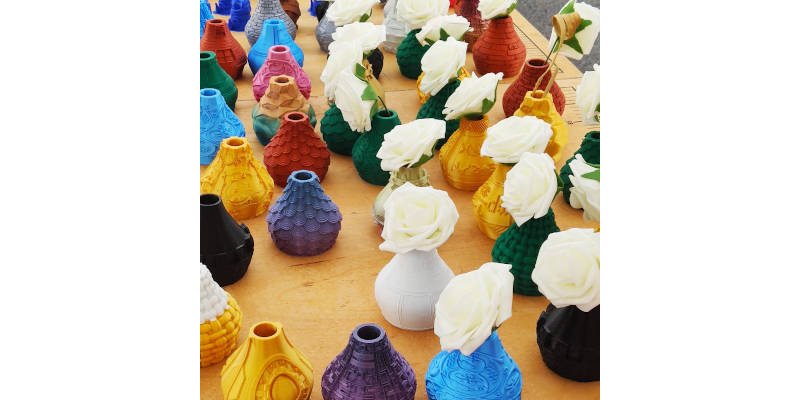
Plant pots can be 3D printed to sell as designs that you either find online or create yourself, and, like many things on this list, can be made to order depending on a consumer’s needs.
Vases and plant pots are known for being both heavy and fragile, and both of these problems are avoidable with 3D printing. By 3D printing plant pots to sell, you can find a wide market of people who want a unique decoration that won’t break so easily and is easy to transport and move around.
Pros: Very easy to setup and build a range. Low skill required to produce, although you’ll need some creativity for the designs. Would be a great business to build further product lines onto (like those mentioned above).
Cons: Competitors could easily copy your designs, so it would be important to build close brand loyalty with customers and innovate new designs or ranges often.
See also: 3D printed vases you can download and print
More: 3D printed plant pots and planters
Retro Raspberry PI Cases

This is a favorite of mine, because it appeals to a specific group of people that love electronics and programming, and therefore are probably pretty nostalgic about the now retro games consoles they used as kids.
This way of tapping into people’s nostalgia speaks volumes and is a powerful combination. You don’t need to stop at retro-themed cases either, you could launch into a realm of new designs. And remember, you only need to print one of each out for photographs – you don’t need to hold inventory of all of these. So why not build the range out?
If you’re just looking for 3D printed items that sell and a simple business model to sell 3D prints online, then a business like this could be for you.
Pros: Fun to do, range of ideas already available. Most competitors aren’t currently marketing their businesses very well, so you’ve got potential to grow easily. Low setup costs.
Cons: Potentially low sale price compared with other 3d printing business ideas here, but plenty of opportunity to scale relatively easily.
Bespoke PC Cases

OK, so this is very high-end stuff. But some people will pay serious money for one-off (or very limited run) custom cases. These examples are at the extreme end of quality, but you could easily make more repeatable designs that look almost as good, but a lot easier to create and design.
I know I said you want to be looking at scale-able ways to make money 3D printing like printing in batches – but you can make an exception for high ticket stuff like this.
Pros: They’d get a lot of attention on social media. People love geeking out over insane gaming rigs, and these case designs are the cherry on top.
Cons: Can be very time-consuming to make, so ensure you charge accordingly. Choose between more mass appeal, more reasonable cases that you can make faster and more easily, or one-off cases that are truly exceptional.
Cell Phone Covers
Whether we like it or not, our cell phones go everywhere with us these days. Work or pleasure, e-mail or Instagram, they’re an integral part of our day-to-day lives.
As such, customization is key. Not only do we like to make our devices easily recognizable at home, but like many things we take everywhere with us, many people like to decorate our cell phones with covers that express our passions or personalities.
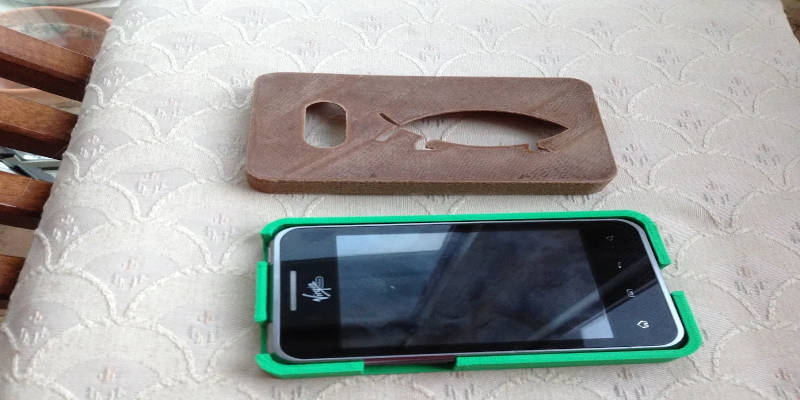
Cell phone covers are a great way to make money with your 3D printer. They are small, often simple projects that don’t take long to print and fit a relatively small variety of sizes. This means that you can keep the base models saved, and alter their designs as necessary to suit your customers.
Robotics Kits

You can create fantastically innovative Robotic Kits from repurposed 3D printer parts. The Robots range from self-balancing RC style, to internet-controlled Whiteboards and Airhockey bots.
These are a fantastic educational guide for children to learn from, and there are many sub niches you could target for ‘robots’., but does require skill and creativity to set up.
Pros: This is a high ticket product, and huge potential for innovation on a range of areas. Especially as InternetOfThings gains in adoption – Wifi Controlled Kettle anyone? Set up costs should also be fairly low.
Cons: Of course, this does require some technical skill to design, and implement.
Or: 3D printed DIY robotic arms
Own Range of Drones, RC Planes & Accessories

This is really exciting. Why? For two reasons; a) drones are becoming really popular, because they’re getting faster, more powerful and can fly for increasingly longer (and of course, they’re really fun). b) the materials available to those who 3D print are becoming more impressive, so you can now print stronger, lighter and more durable stuff.
For example, carbon fiber is a low density, hard and durable material, ideal for small aircraft that undergo significant stresses and high impact crashes. Sure you can use regular PLA, but it’s very dense, and not as hard. With new materials like this, you can create ever higher-performing machines.
Another bonus is that when you’re flying a drone or 3D printed RC plane at 70pmh+ into a tree, no matter how strong the parts are, you’ll get some breakages. Leading to repeat business.
Read more: 3D printed RC planes you can build today

Pros: Rapidly expanding niche, open-source designs – low tech 3D printer required. Good margins.
Cons: Some knowledge is required to really gain the best understanding of drones and how to improve them.
See also: our guide to 3D printing drones
Toys
3D printed toys can in more forms than statuettes, and people are always looking for unique gifts for their children or toy aficionado friends.
See also: get some ideas from our list of the coolest 3D printed toys
Board game parts, custom chess pieces, doll house furniture, and marionettes are just a few of the things you can 3D print and sell as gifts for all occasions.
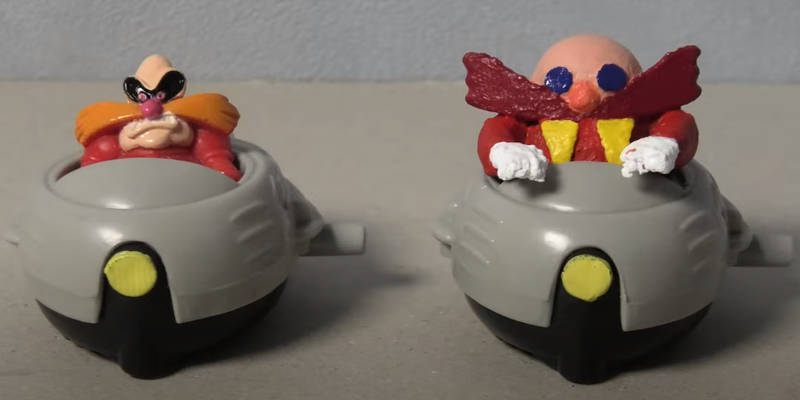
Articulated dolls and puppets will require some assembly, but with enough creativity you can create your own line of unique characters and even give them back stories for a level of intrigue that has been proven to add to marketability (as seen with the likes of American Girl Dolls).
Current Trend

Every now and then, a craze sweeps the world and everyone gets excited about something. Sure these are often a flash in the pan, relatively speaking – and nearly everyone is too slow to react to make a business from them. But things are changing…
With 3D printing, if you have an idea, you can create something overnight. It allows you the luxury of speed. This is great, because with a good idea and the speed to do it, you can launch new exciting products and gain fast press publicity off of the back of the trend.
If you’re a fast thinker with a dash of creativity this could be the answer to your how to profit from 3D printing queries.
In the past I explained the HODOR door-stop reference, which could be made from filament (only really makes sense if you’re a Game Of Thrones fan I’m afraid) – and since then we’ve had the Pokémon Go craze. You may or may not be aware of the ins and outs, but essentially it involved everyone in the world, mindlessly chasing invisible Pokémon everywhere.
And to catch them, you needed to have a steady finger. Except a of people don’t seem to have one of those, so Pokémon ‘aimers’ were devised. There were different designs for different phones.
This sort of thing works fantastically well on crowdfunding sites like Kickstarter – you can then list for sale on Marketplace websites during and after the main Kickstarter campaign to mop up excess sales and squeeze the craze for each last drop.
Pros: If you can be first, the potential is huge. The HODOR door stop raised over $12,000 US on Kickstarter in about a week.
Cons: Short-lived, so you have to be fast and able to jump on what’s trending. Twitter Trends might be a great thing to keep an eye on.
Customized Ear Buds

Everyone’s ear is different. If you wear stock earphones, it’s likely they’re not as comfortable or sound insulated as they could be.
There are a small handful of companies offering this service already – which proves there’s a market for it. Using a phone 3D scan app, the customer ‘scans’ the inside of their ear, for the app to create a 3D file. You can then custom print the earbuds which fit inside the customer’s ear to the perfect size.
The actual earphone part of the product could be bought off-the-shelf, and you package the custom bud as part of the product. This would allow you to retail a high-end sound quality item, with the custom size benefit.
The unit costs would be extremely small as the material used would be next to nothing. So once you’ve paid setup expenses for a high-resolution printer, your margins would be good.
You could later build out the range with different colors and styles. As far as print-on-demand e-commerce businesses go, this has a lot going for it.
With the small size of each earphone, it may even be worth getting these outsourced to a 3D printing service. This would keep fixed setup costs to an absolute minimum in the early days. An SLA printer might only charge £20-£30 for something that you could sell for £100 or more.
As a way to get started, here’s a fantastic guide to printing your first set of custom earphones.
Pros: High margin and it’s a big niche – so plenty of potential customers, especially if you can create an efficient system to keep price sensible.
Cons: Precision printing and sizing is a must, so make sure you get the correct equipment. Don’t skim on the audio quality of the earphones – or it’ll cheapen your whole product offering.
Where Can You Sell Your 3D Prints?
After you’ve decided on what things to 3D print and sell, you’re going to want to chose the right retail venue to reach customers and maximize sales.
There are many online marketplaces where you can sell 3D printed items, each one offers a different experience depending on what kind of service you’d like to provide.
Thingiverse
Thingiverse is a very popular site for people who want to share their 3D printed creations online. While most of these are shared as free downloads for other users, it is possible to sell 3D printed items on the popular site.
Anyone can list their 3D printed items for sale on Thingiverse provided they’re original designs that neither copy another user’s files nor infringe on copyright laws.
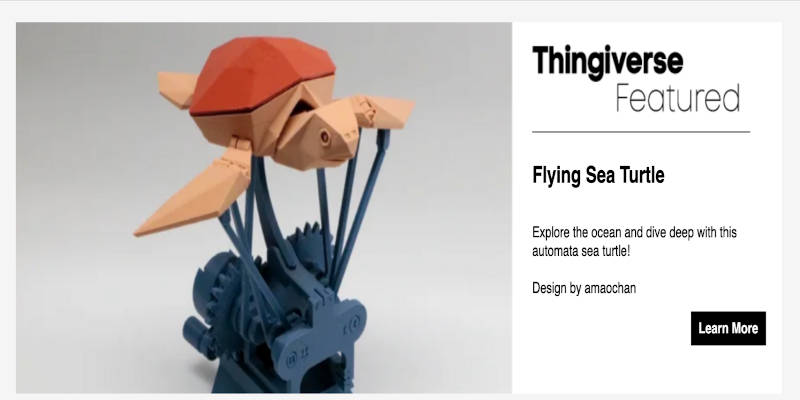
While selling on Thingiverse is possible, most people will use the site to look for free files, which the site is known for, and so are more likely to turn away from a price tag.
Moreover, physical items cannot be sold here, only the files. So as popular as Thingiverse is for 3D printer owners, using it to sell 3D printed items is difficult and may yield little success.
Etsy
Etsy is an online retailer for amateur creators that is normally the first stop for anyone seeking to make a profit out of their hobby.
While not specifically designed for selling 3D printed items, Etsy is an open marketplace for creators of all kinds to offer their designs for sale at a price they set themselves.
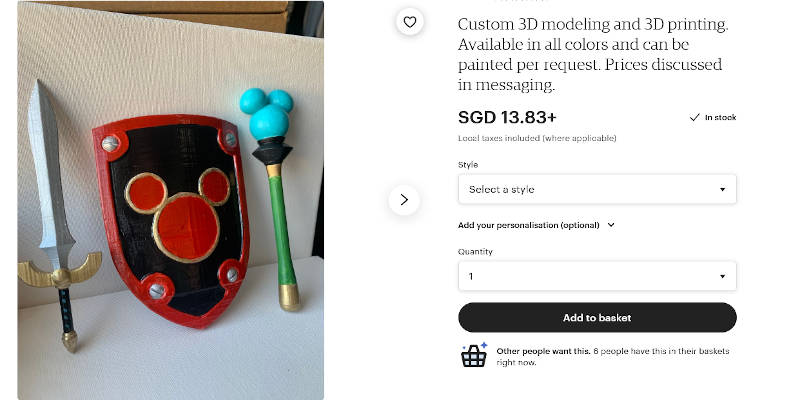
Online shoppers go to Etsy for unique, handmade objects, so your 3D printed designs aren’t likely to be buried under mass-produced products that can be found in other marketplaces. This means that customers are more likely to favor 3D printed items for sale on the store.
Etsy charges $0.20 per item up for sale and a transaction fee of 5% of the total value of each sale, even more if you choose their online payment service.
Fiverr
Fiverr is an online resource for freelancers to sell their services. While Etsy caters specifically to handmade items by artists and designers, Fiverr is geared towards all those who work either full- or part-time from home in any capacity, from writing and translations to 3D printing and artwork.
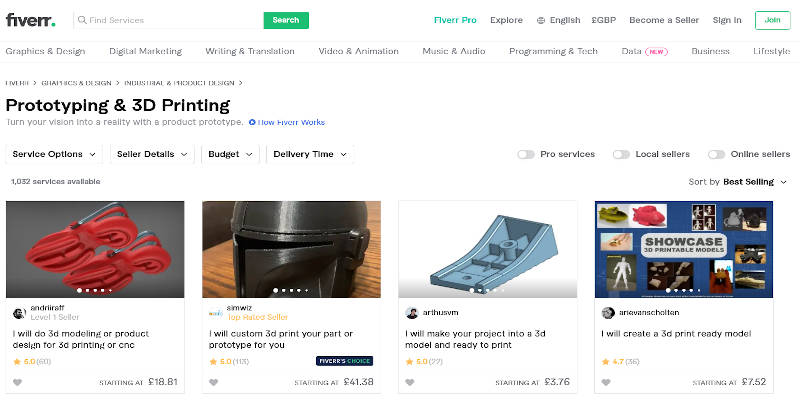
Unlike most online marketplaces, Fiverr is geared towards those who work to commissions, with buyers requesting specific, custom items and works from sellers. This means printing to order, and often to exact specifications, so it’s a marketplace of choice to dedicated designers who are capable of modifying models to specific degrees before printing.
Fiverr has a peer-to-peer review system where both sellers and buyers receive star ratings and notes based on others’ experiences, helping to ensure all users are able to accept or decline orders as they see fit.
Amazon
The Amazon marketplace is probably the most secure of all the online sites to sell products on because of their high profile requiring them to pay more attention to theft and fraud prevention. However, this comes at quite a literal price, as Amazon takes a higher commission than most at 8-15% depending on the product.
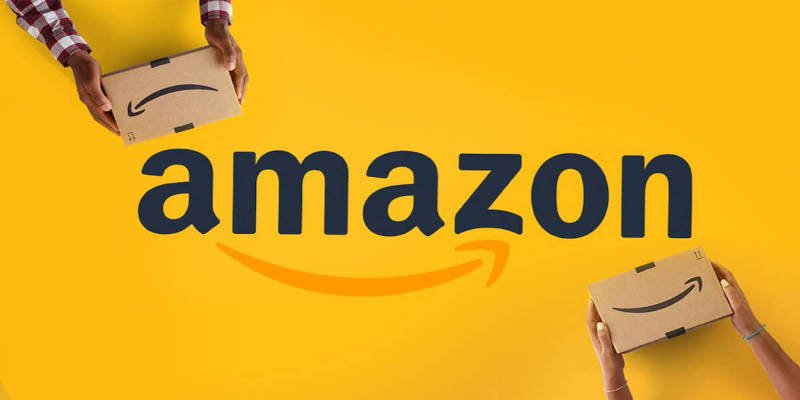
While the 3D printer Amazon marketplace is a good place for part-time sellers, many people who have turned to online retail as full-time professions tend to look elsewhere due to the higher commissions that can take wide margins from fully formed businesses.
Conclusion: is it worth selling your 3D prints to make money?
For weighing up whether it’s worth it to start 3D printing commercially, only you can make that decision for yourself.
If you can make it work, using your 3D printer to make money can be a great and fun side hustle.
- If this article has piqued your interest, you should also read our guide to starting a 3D printing business.
- The best 3D printers for small business



